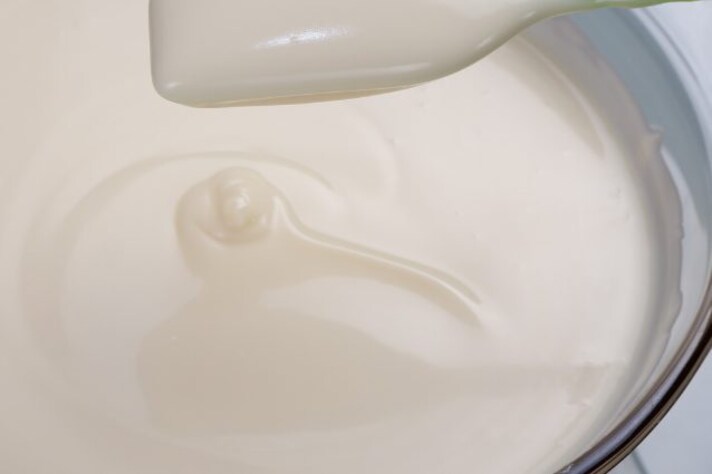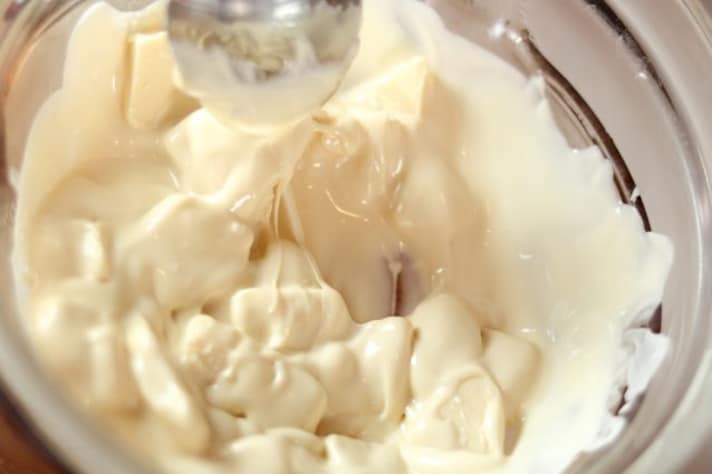How to Melt White Chocolate: 2 Foolproof Methods To Never Make it Burn!
Melting white chocolate can be tricky due to its high cocoa butter content, which makes it prone to burning. For the best results, use a double boiler on the stove or microwave it in short intervals on medium power, stirring often. If it seizes or becomes too thick, add a small amount of vegetable oil or cocoa butter and reheat gently.

Who doesn’t love the creamy decadence of chocolate sauce? Drizzling it over pancakes, using it as a dip for fruits, or slathering it on cakes and crepes is pure bliss. While melting chocolate is generally a straightforward task, there’s one variety that demands a bit more finesse: white chocolate. Though it’s perfect for creating silky sauces and ganaches, white chocolate can be finicky to melt. But fear not! With our expert advice, you'll soon be enjoying smooth, melted white chocolate that’s worthy of a dive.
Why Melting White Chocolate Can Be Tricky
White chocolate is a bit of a diva in the melting world. Unlike dark or milk chocolate, which contain cocoa solids and cocoa butter, white chocolate is composed primarily of cocoa butter, sugar, and milk solids. This unique composition makes it prone to burning and seizing if not handled correctly. The high fat content in white chocolate can cause it to scorch quickly, leaving you with a lumpy mess. To avoid these pitfalls, opt for high-quality white chocolate with a high cocoa butter content. It melts more evenly and has a better texture, ensuring a smoother result.

How to Melt White Chocolate on The Stove
The double boiler method is a tried-and-true technique for melting white chocolate. Here’s how to do it:
- Fill the bottom pot of your double boiler with about an inch of water and place it on the stove. Ensure that the water does not touch the bottom of the top bowl or pan.
- Bring the water to a gentle simmer over medium heat. You want a steady, low heat to gently melt the chocolate without scorching it.
- Chop your white chocolate into small, uniform pieces. This helps it melt more evenly. Place the chocolate in the top bowl or pan of the double boiler.
- As the chocolate begins to melt, stir it frequently with a spatula or wooden spoon. This ensures even melting and helps prevent hot spots that can lead to burning.
- Once the chocolate is fully melted and smooth, remove the bowl from the top of the double boiler and use it immediately. If you’re not using it right away, keep it warm by placing the bowl over the pot of hot water, off the heat.
How to Melt White Chocolate in The Microwave
Yes, you can melt white chocolate in the microwave! Just follow these steps for a smooth result:
As with the double boiler method, chop your white chocolate into small pieces to promote even melting. Place the chocolate in a microwave-safe bowl. Microwave on medium power for 30 seconds at a time, stirring between intervals. This prevents overheating and ensures the chocolate melts evenly. After each interval, stir the chocolate thoroughly. It may look like it's not melting, but stirring helps the residual heat continue the melting process. Continue microwaving and stirring until the chocolate is completely smooth and melted. Be careful not to overheat, as white chocolate can burn quickly.

How to Fix Seized or Thickened Melted White Chocolate
Sometimes, despite your best efforts, white chocolate can seize up or become too thick. If this happens, don’t panic! Here’s how to salvage it:
Add a Fat
If your white chocolate has seized or become too thick, stir in a small amount of vegetable oil or cocoa butter. Start with just a teaspoon and add more if needed. This will help loosen the texture and smooth it out.
Reheat Gently
If the chocolate has cooled and thickened, gently reheat it over a double boiler or in the microwave, stirring frequently. Adding a bit of milk or cream can also help restore a smoother consistency.
Avoid Water
Be cautious about adding water to white chocolate, as even a small amount can cause it to seize further. Stick to fats for adjustments.
;Resize,width=767;)
;Resize,width=712;)


